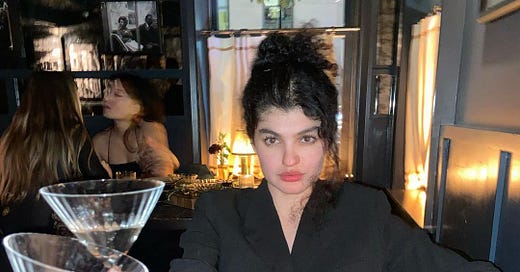Closet Psyche: The Fashion Writer Who Cannot Let Go of Her Mother’s Vests
Writer Nicolaia Rips tells me about two vests her mother gave her while I tackle my own mother-object attachment issues.
This Closet Psyche episode is about a brunette only child who is a fashion writer…ok, it’s not about me, but about writer Nicolaia Rips. (Then again, I wrote a lot about me. This piece cracked my head open. Nicolaia called it the “Mommy Issues EP”. Oy.) Anyways, Nicolaia, blessed with an incredible roll-o…





